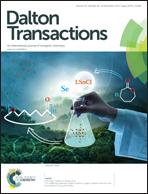Isolation and structural characterization of a mainly ligand-based dimetallic radical†
Abstract
A radical cation of ruthenium was isolated and structurally characterized. The EPR spectrum and theoretical calculations indicate that the spin density mainly resides on ligands. The X-ray structure shows that the change in metal–metal bond lengths is negligible upon one-electron oxidation. sp3 C–H bond activation was observed during the reaction of the parent molecule with the trityl cation, which possibly occurs via an oxidative EC mechanism: a thermodynamically favorable electron-transfer to give the radical cation intermediate, followed by the hydrogen atom abstraction to afford a cationic tetramethylfulvene complex with formation of a metal–carbon bond.


 Please wait while we load your content...
Please wait while we load your content...